DROPS 59-7 |
||||||||||||||||
 |
 |
|||||||||||||||
Knitted sweater for women, men and children in DROPS Alaska. Piece is worked with Nordic Icelandic pattern. Women’s size S – L. Men’s size S – XXL. Children’s size 2 – 14 years.
DROPS 59-7 |
||||||||||||||||
|
------------------------------------------------------- START THE PIECE WOMEN AND MEN: ------------------------------------------------------- EXPLANATION FOR THE PATTERN WOMEN AND MEN: PATTERN: See diagram. Pattern is worked in stocking stitch. RIB: * knit 2 / purl 2 *. Repeat from *-*. ------------------------------------------------------- Body: Numbers in ( ) = men's sizes. Cast on 184-188 (188-196-200-208) sts on smaller circular needles with natural; join and place a marker at the join. Knit 5-5 (6-6-6-6) cm rib, increasing 16-28 (12-20-24-32) sts evenly distributed on the last row = 200-216 (200-216-224-240) sts. Change to larger circular needles and knit Pattern (center the pattern across front and back) until the work measures 35-38 (42-43-45-47) cm . Knit the next row as follows: bind off 2 sts for armhole, 96-104 (96-104-108-116) sts for the front, bind off 4 sts for armhole, 96-104 (96-104-108-116) sts for the back, bind off 2 sts for armhole. Knit the rest of each part separately. Front: = 96-104 (96-104-108-116) sts. Bind off for armholes every other row: 2 sts 1-2 (0-1-2-3) times, 1 st 3-2 (1-2-2-3) times = 86-92 (94-96-96-98) sts. When the work measures 54-58 (62-64-66-69) cm , bind off the center 12-14 (14-16-16-18) sts for the neck. Bind off at each neck edge every other row: 3 sts 1 time, 2 sts 2 times, 1 st 2 times. Bind off when the work measures 60-64 (68-70-72-75) cm . Back: = 96-104 (96-104-108-116) sts. Bind off for armholes as on the front = 86-92 (94-96-96-98) sts. When the work measures 58-62 (66-68-70-73) cm , bind off the center 26-28 (28-30-30-32) sts for the neck. Bind off 2 sts at each neck edge on the next row. Bind off when the work measures 60-64 (68-70-72-75) cm . Sleeves: Cast on 40-44 (44-44-48-48) sts on smaller double pointed needles with natural; join and place a marker at the join. Knit 5-5 (6-6-6-6) cm rib, increasing 8-4 (4-4-8-8) sts evenly distributed on the last row = 48-48 (48-48-56-56) sts. Change to larger double pointed needles and knit Pattern, centering the pattern on the sleeve. After the rib, inc 1 st each side of marker 19-20 (20-22-18-20) times: Sizes S/M (S/M + XXL): alternately every 4th and 5th row Sizes M/L (M/L): every 4th row Size (XL): every 5th row = 86-88 (88-92-92-96) sts. When the work measures 46-45 (51-50-51-52) cm , bind off 2 sts each side of marker and knit the rest back and forth on the needles. Bind off for sleeve caps each side every other row: 4-3 (5-4-3-3) sts 7-8 (5-7-8-9) times, bind off. The work measures approx. 53-53 (56-57-59-61) cm . Assembly: Sew shoulder seams. Pick up approx. 92-108 sts (divisible by 4 sts) around the neck on smaller double pointed needles with natural; join and knit rib for 14-16 (16-16-18-18) cm , bind off loosely in rib. Sew on the sleeves. ------------------------------------------------------- START THE PIECE CHILDREN: ------------------------------------------------------- EXPLANATION FOR THE PATTERN CHILDREN: PATTERN: See diagram. Pattern is worked in stocking stitch. RIB: * knit 2 / purl 2 *. Repeat from *-*. ------------------------------------------------------- Body: Colors in ( ) = blue-gray sweater. Cast on 116-120-128-136 (144-152-160) sts on smaller circular needles with light brown heather (gray-blue); join and place a marker at the join. Knit 4-4-4-5 (5-5-5) cm rib, increasing 12-16-16-16 (24-24-24) evenly distributed on the last row = 128-136-144-152 (168-176-184) sts. Change to larger circular needles and knit Pattern, centering the pattern across the front and back. When the work measures 27-28-30-33 (34-35-37) cm , knit the next row as follows: bind off 2 sts for armhole, 60-64-68-72 (80-84-88) sts for the front, bind off 4 sts for armhole, 60-64-68-72 (80-84-88) sts for the back, bind off 2 sts for armhole. Knit the rest of each part separately. Front: = 60-64-68-72 (80-84-88) sts. Bind off for armholes every other row: 2 sts 1-1-0-1 (1-1-1) time, 1 st 1-1-2-1 (3-3-3) times = 54-58-64-66 (70-74-78) sts. When the work measures 37-41-44-48 (50-52-55) cm , bind off the center 12-14-14-16 (16-18-18) sts for the neck. Bind off at each neck edge every other row: 2 sts 2 times, 1 st 2 times. Bind off when the work measures 41-45-48-53 (55-57-60) cm . Back: = 60-64-68-72 (80-84-88) sts. Bind off for armholes as on the front = 54-58-64-66 (70-74-78) sts. When the work measures 39-43-46-51 (53-55-58) cm , bind off the center 20-22-22-24 (24-26-26) sts for the neck. Bind off 2 sts at each neck edge on the next row. Bind off when the work measures 41-45-48-53 (55-57-60) cm . Sleeves: Cast on 32-32-36-36 (40-40-40) sts on smaller double pointed needles with light brown heather (gray-blue); join and place a marker at the join. Knit 4-4-4-5 (5-5-5) cm rib, increasing 4-8-4-6 (4-4-6) sts evenly distributed over the last row = 36-40-40-42 (44-44-46) sts. Change to larger double pointed needles and knit Pattern, centering the pattern on the sleeve. After the rib, inc 1 st each side of marker 6-9-11-13 (14-15-16) times: Size 2 years: every 7th row Sizes 3/4 + 5/6 years: alternately every 5th and 6th row Sizes 7/8 + 9/10 + 11/12 + 13/14 years: every 5th row = 48-58-62-68 (72-74-78) sts. When the work measures 25-29-33-38 (40-42-46) cm , bind off 2 sts each side of marker and knit the rest back and forth on the needles. Bind off for sleeve caps on each side every other row: 3-3-5-5 (3-4-4) sts 5-5-4-4 (6-6-6) times, bind off. The work measures approx. 30-34-37-42 (46-48-52) cm . Assembly: Sew shoulder seams. Pick up approx. 76-92 sts (divisible by 4 sts) around the neck on smaller double pointed needles with light brown heather (blue-gray); join and knit rib for 12-12-12-14 (14-14-14) cm , bind off loosely in rib. Sew on the sleeves. |
||||||||||||||||
Diagram explanations |
||||||||||||||||
|
||||||||||||||||
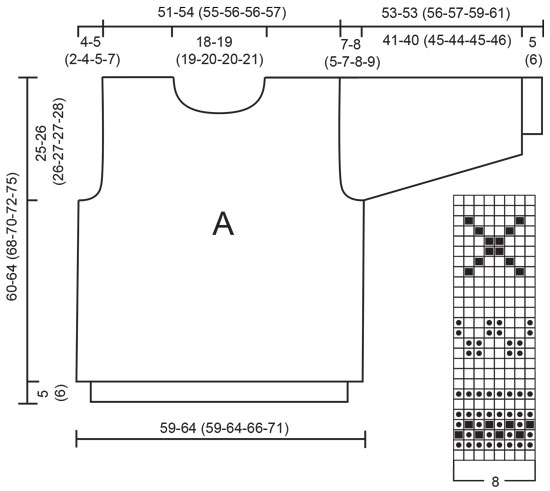
|
||||||||||||||||
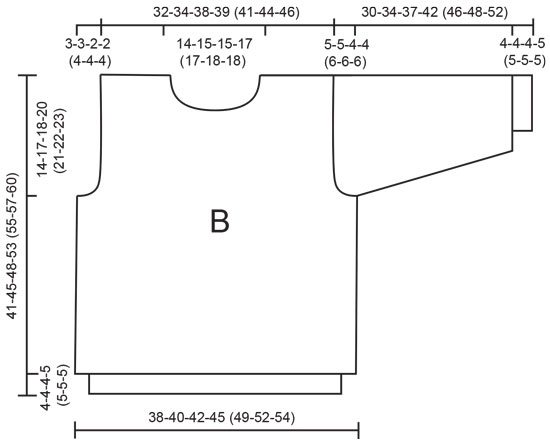
|
||||||||||||||||
|
Have you made this or any other of our designs? Tag your pictures in social media with #dropsdesign so we can see them! Do you need help with this pattern?You'll find tutorial videos, a Comments/Questions area and more by visiting the pattern on garnstudio.com. © 1982-2024 DROPS Design A/S. We reserve all rights. This document, including all its sub-sections, has copyrights. Read more about what you can do with our patterns at the bottom of each pattern on our site. |
||||||||||||||||











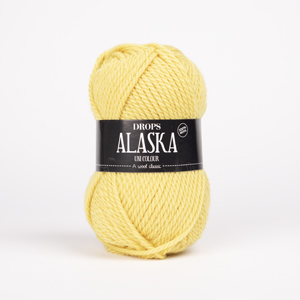

















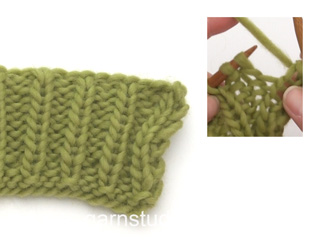











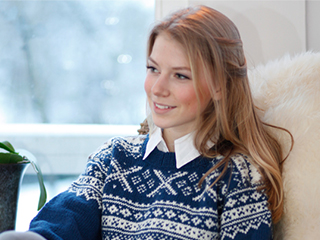





















Comments / Questions (19)
Hej Saknar mönster diagrammet till barnstorlek i denna beskrivning.
25.02.2023 - 20:06DROPS Design answered:
Hei Marianne. Herregenseren du ser på bildet er også en barnegenser, begge beskrivelser og diagram ses under bildet, men ønsker du barnegenseren du ser på bildet må du se i DROPS 59-8 (gamle bilder tatt for å ha i katalog og da kunne det være flere modeller er på samme bildet). mvh DROPS Design
27.02.2023 - 13:45Til højre i baggrunden på fotoet findes trøjen i brune nuancer. Har I en opskrift på den.
15.02.2023 - 18:57DROPS Design answered:
Hej Inge, det er samme opskrift og du finder farverne længere nede i opskriften under MATERIALER BØRN :)
16.02.2023 - 09:11Pour le modèle drop 59-7, on travaille sur des aiguilles circulaires(la partie dos, devant), je ne comprend donc pas l'instruction suivante : "Terminer chaque pièce séparément." Ceci concerne la partie devant, dos. D'avance merci
03.02.2023 - 17:21DROPS Design answered:
Bonjour Thierry, le bas du dos et du devant se tricote en rond jusqu'aux emmanchures, on rabat ensuite les mailles des emmanchures et on va terminer le dos et le devant séparément, en allers et retours, Autrement dit, mettez une partie des mailles en attente et continuez à tricoter l'autre moitié des mailles, en rabattant les mailles des emmanchures de chaque côté . Bon tricot!
06.02.2023 - 09:03Tröjan59-7 . På bilden längs ner till höger har en kille denna tröjan. Jag hittar inte monstret till den.
25.12.2022 - 13:50DROPS Design answered:
Hei Yvonne. Oppskriften finner du under DROPS 59-8. Det er også bilde av en voksen oppskrift, men barneoppskriften står sammen med voksen oppskriften. mvh DROPS Design
02.01.2023 - 10:51I see from the comments that you were going to insert the M2 chart for the Childs sweater but it isnt there. I looked at 57-8 that you said you can find the graph but that pattern is DROPS 57-8 by DROPS Design DROPS Cardigan in Cotton Chenille or Tynn Chenille with collar and cuffs in Pelliza and Viscose. Can you please insert the chart
17.06.2022 - 02:30DROPS Design answered:
Dear Debra, you can see diagram M.2 in 59-8, which is a pattern complimentary to this one: https://www.garnstudio.com/pattern.php?id=1884&cid=19. Happy knitting!
18.06.2022 - 15:42Kære Dropsvejleder. Jeg er færdig med kroppen og skal iht. opskriften nu starte næste pind således : "luk 2 m af til ærmegab, strik 108 m forstk, luk 4 m af til ærmegab, strikke 108 m ryg, luk 2 m af til ærmegab." Når jeg lukker de sidste 2 m af lige før omgangen er slut, ender jeg med en maske på højre pind, som befinder sig mellem 2 aflukkede masker på begge sider (= 1 maske for lidt til ryg)
06.07.2021 - 13:58DROPS Design answered:
Hej Annette, ja det stemmer, da klipper du tråden, trækker den ud og starter med tråden i den ene side af forstykket eller bagstykket igen :)
12.07.2021 - 15:18Hvorfor har i ikke opskriften til mænd større end XXL kunne godt bruge nogle XXXXL
13.04.2021 - 05:36DROPS Design answered:
Hej Birgit, vi har op til XXXL se her: Herrer - xxxl Du finder brystmålet i måleskitsen nederst i hver opskrift.
13.04.2021 - 11:30Hej jeg har tidligere efterspurgt mønsteret på den sweater som drengen har på . Han sidder på skødet af den voksne mand. I har givet mig mønster 59-8 men det er ikke den for den har lynlås i halsen og det har den drengen har på ikke Mvh Jette Holm
29.01.2021 - 19:40DROPS Design answered:
Hei Jette. Svar fra 18. 01.2021 ba vi deg scrolle lengre ned på siden (sammen side, ikke oppskrift 57-8), og der er oppskriften til barnegenseren uten glidelås, men det ser ut som at mønstret (diagram M.2) mangler og det finner du under 57-8. Vi skal asap få lagt til mønstret (diagram M.2) under oppskrift 57-8. mvh DROPS design
01.02.2021 - 14:15Hvor finder jeg mønsteret til på børnesweateren på det barn der sidder på skødet af manden i mønster 59-7?
18.01.2021 - 10:00DROPS Design answered:
Hei Jette. Den finner du på samme side, bare scroll lengre ned på siden. mvh DROPS design
18.01.2021 - 15:22Hej Er der 50 g i hver garnnøgle, når man skal bestille? Og er rundpinden til herremodellen 80 cm?
27.09.2020 - 13:05DROPS Design answered:
Hej Lise, ja det stemmer, der er 50 g i hvert nøgle, og du kan bruge 80 cm til kroppen og strømpepinde til ærmerne. God fornøjelse!
28.09.2020 - 08:01